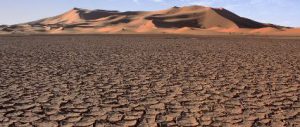Reflecting on the events of 2008 can spur China to re-examine its strategies for political and economic development. The lessons of the past year can also inform its climate-change strategy. This year will be crucial for climate-change negotiations, and a number of events of the past year are of particular significance to consider at this time:
Energy security
First, fluctuations in the price of oil, piracy in the Gulf of Aden and the freezing weather that struck southern China in early 2008 threw into sharp relief the fragility of China’s energy fundamentals. International speculators, maritime hijackers and the weather can easily threaten the country’s energy and economic security. And there will not be any significant change in this situation for the foreseeable future.
Variations in the price of oil will continue to affect the global economy. A small group of international speculators control the markets, and governments are powerless. At the same time, the world relies on the United States to protect shipping lanes. No other navy has the ability to carry out extended long-distance patrols or operations, and it is unclear if China has the will to do so. On December 18, after the attack on the Chinese vessel Zhenhua 4, Liu Jianchao, then spokesperson for the Ministry of Foreign Affairs, said that he was “sure the Chinese crew dealt with pirates tactfully to ensure safety of their own and the ship while waiting for assistance.” According to reports, “tactfully” meant the crew locking themselves in their cabins to shut out the pirates, although at one point the crew used petrol bombs to hold them off. On December 20, China announced a naval task force would go to the Gulf of Aden. However, the mission will last only three months. So what happens when it ends? Last year, 1,300 Chinese vessels travelled through these seas, three or four every day. OPEC says that 80% of China’s overseas oil supply comes through the Gulf of Aden, compared to only 6% of Russia’s supply.
The lesson is clear. Besides taking advantage the protection offered by the United States and strengthening its own navy, China needs to learn lessons from Germany and Japan in producing maximum wealth from minimum input. A nation that has to rely on its sailors locking themselves into their cabins needs another path. China has been on a new path since the State Council issued the Comprehensive Working Program on Energy Saving and Emission Elimination in May 2007. The pirates provided a vivid demonstration of why it is necessary.
Financial crisis
Last year saw an entire country go bankrupt, yet the economic slump will worsen yet. The major economies have launched rescue packages, with the Chinese government’s 4-trillion-yuan (US$585 billion) stimulus plan earning widespread praise. But economic problems always end; the important thing is to learn from them and strengthen the economy to weather future storms.
The Chinese stimulus is no small figure. But if the country does not establish mechanisms to provide sustained economic growth – and simply reacts to short-term circumstances – only the symptoms will be cured, at best. China has allowed its people to subsidise production, achieving rapid growth but allowing macroeconomic risks and an imbalance between internal and external markets. Capital, labour and land costs have been kept low, resulting in over-investment and excessive export growth. The role of technological advances in economic growth lags far behind that of developed countries – and even some emerging economies. This model of economic growth, which damages resources and environmental capacity, is akin to killing chickens to obtain their eggs. Feeble welfare safeguards and a bias toward (mostly state-owned) businesses and government in the distribution of income means that little wealth ends up in the hands of the people – and domestic demand remains weak. Foreign reserves, hard-earned through the people’s labour, are lent to the United States and spent there. (Before Henry Paulson and Ben Bernanke turn round and criticise China.) If China continues on this route, it will become a rich country with a poor population – and find itself in the situation of Latin American nations. The Far Eastern Economic Review predicts the crisis has sounded the death knell for the coexistence of the Chinese and American economic models.
Without new sources of economic growth, China will struggle to escape its predicament. Without new industries, the wonder of the last three decades will not be repeated. The government announced in December that new policies would aim to maintain growth, expand domestic demand and readjust national structures. This showed that transforming the country’s model of growth is now a key government aim. Addressing the external/internal imbalance and ensuring the nation is strong – and the people are wealthy – is of strategic import for the long-term political and economic governance of the country. It is not just a question of deciding how to spend 4 trillion yuan.
Which international mechanisms could help China to achieve its aims? The global trade system is not a likely candidate, but climate-change mechanisms have some potential. Climate-change negotiations stand at a crossroads: if they can lead the world towards a low-carbon economy, with high-technology energy sources and new employment opportunities, they could help with China’s economic transformation.
Media conflict
During the Olympic Torch Relay, war broke out between the western media and Chinese netizens. This showed that China no longer suffers starvation or attacks, but it still suffers abuse. China is now the world’s largest emitter of greenhouse gases, and this added one more reason to criticise the country. However, the official media lacks credibility – its public relations efforts leave it looking strangely feeble. China needs to innovate and improve its public relations strategies.
In 2007 China became the first developing nation to announce a national climate-change programme. The next year the country issued a white paper on energy-saving and emissions reductions, which showed the initial achievements of that process. The country’s climate-change efforts are earning greater international understanding and approval, but using public relations to support these actions is a long-term challenge for China.
The financial crisis demonstrates that the world cannot simply rely on American consumption to drive economic growth. But what can replace it? Many said at the recent meeting of the World Economic Forum in Davos that the crisis must not delay action on climate change. In fact, it presents an important opportunity. There has been a major change in the way the world views global warming: if the right policies are adopted, there is an opportunity to meet the future and its challenges. The world needs to shift its reliance on high-carbon energy sources and create low-carbon economies. The future of China and the world economy lies in innovation – in concepts, systems and models of growth. Climate-change negotiations provide a context for this, and we must hope they are successful.
Gao Feng is director of the legal department at the UN Framework Convention on Climate Change secretariat.
Homepage photo by randomix


